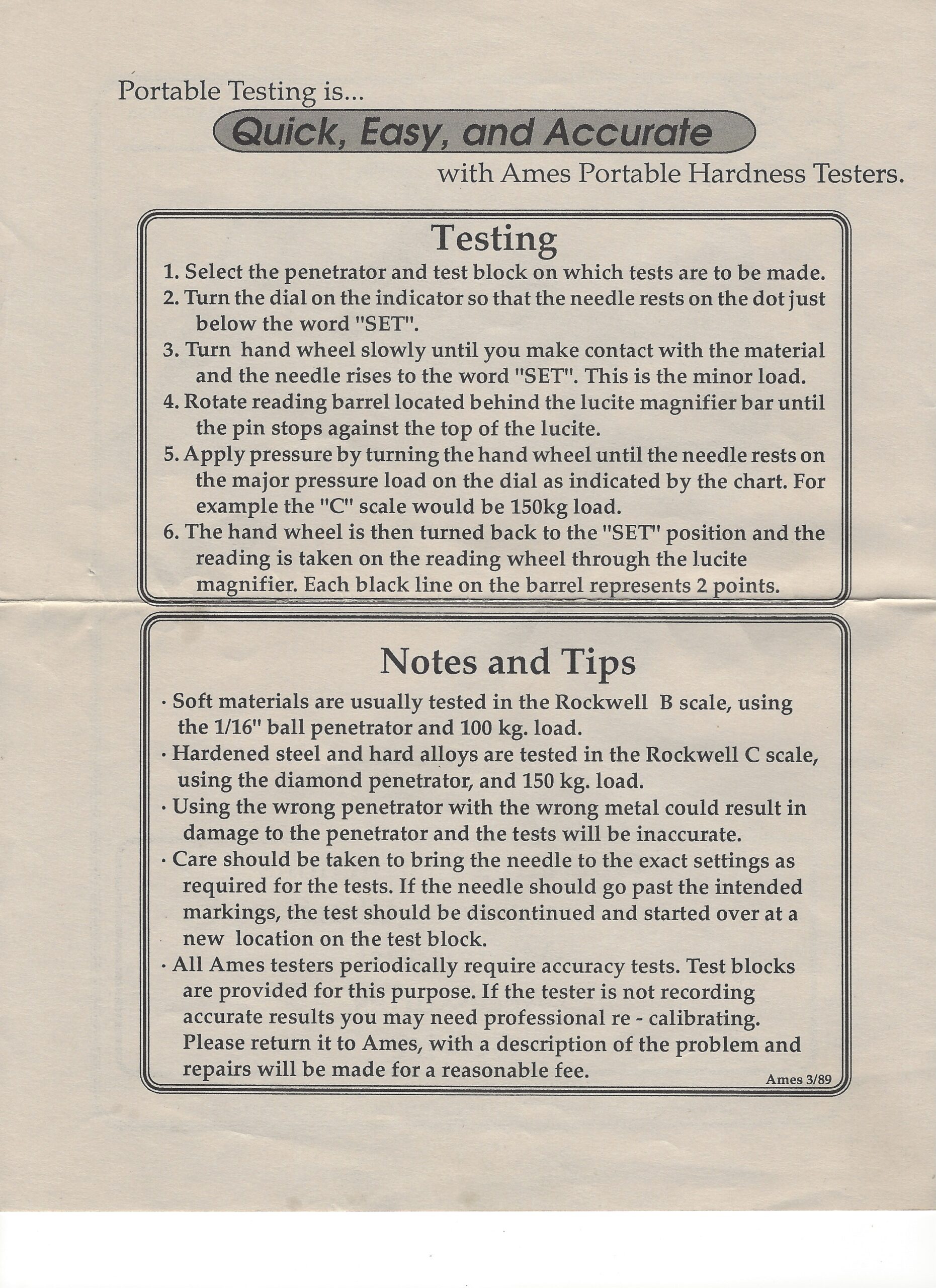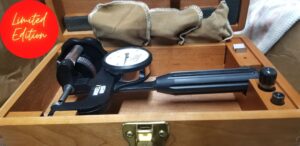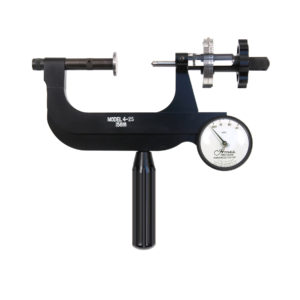Rockwell Hardness Charts for Metals
Ames Rockwell-Brinnell Conversion Chart
Our handy conversion chart helps you convert your Ames Hardness Readings from the Rockwell scales to Brinnell scales
Download NowChoosing a Rockwell Hardness Scale
Below are a few Hardness Scale charts that will help you choose the proper set up for your Ames Rockwell portable hardness tester. The charts cover the following :
All information included in this article is found in the Ames Tester Manual. Download it here.
Material to be tested –
Very hard metals, soft and hard steel, aluminum, brass, and thinner materials can all be tested with our testers.
Brass and aluminum alloys can be handled by using a 1/16 ball
The penetrator that is needed –
Very hard metals like tungsten carbide, and thin steel needs to be tested using a Diamond penetrator.
Brass and aluminum alloys can be handled by using a 1/16 ball
Brass and aluminum alloys can be handled by using a 1/16 ball
The major load to be applied –
Your tester is guaranteed to +/- 1 point Rockwell. When using this tester, you must use extreme care to position the pointer exactly on the minor and major load marks.
Lastly, the correct Barrel dial setting –
The upper line of the barrel’s hardness scales should be exactly aligned beneath the hairline on the magnifier.
Do you need to convert Brinell to Rockwell? See our Rockwell/Brinell conversion chart.

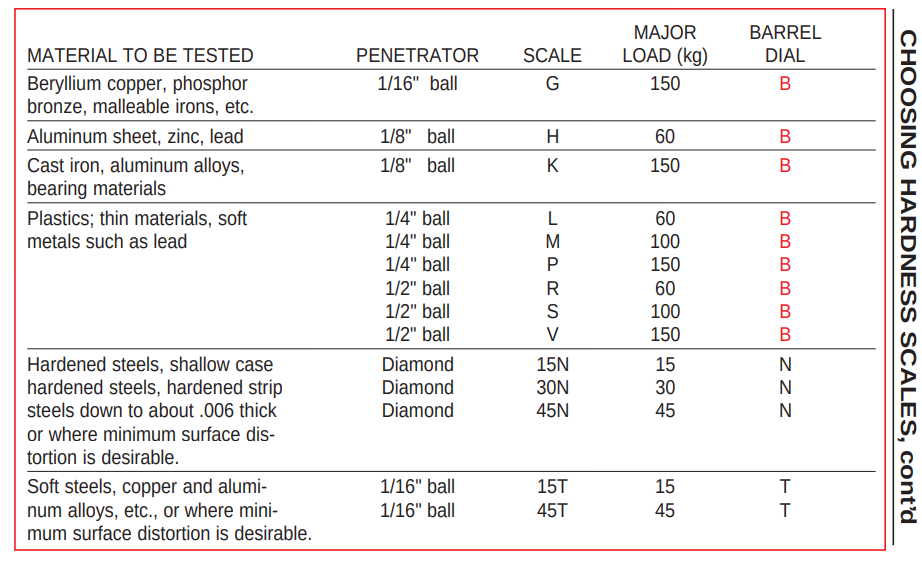
Here are some commonly used scales on our models.
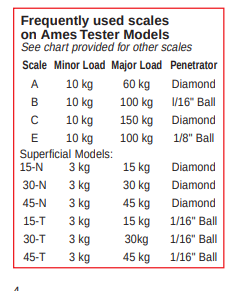
Please contact us with any questions regarding proper maintenance and set up of our Rockwell testers.
